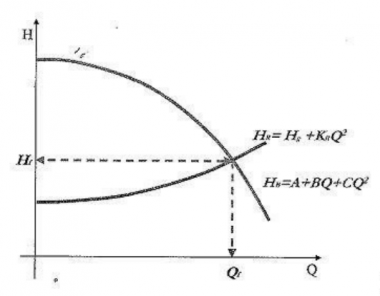Theory bites are a collection of basic hydraulic theory and will touch upon pump design and other areas of pump industry knowledge.
The function of the pumps in the pumping stations (PS) is to supply the energy necessary for the fluid to overcome the set of losses with which it is located in the installation, and to have sufficient energy at the exit of the PS The location of the pump at a specific point of the installation has as its object, to overcome the losses that occur.
These losses, in the pressure systems, have two natures: it is necessary that the pump to be able to raise the fluid above the physical elevation (fixed) and a part of this energy must go directed to overcome the losses that appear in the elements of the installation: in the pipes as friction losses and in the accessories as localized losses. In this case, the losses, in general, are proportional to the square of the flow.
 In this way, it is possible to describe what is called the resistance curve of the installation which facing a pump performance curve, will provide the desired point (Working Point): When both curves are algebraically equal, they will have a single solution.
In this way, it is possible to describe what is called the resistance curve of the installation which facing a pump performance curve, will provide the desired point (Working Point): When both curves are algebraically equal, they will have a single solution.
(These are two curves that depend on the same magnitudes, a flow that circulates through a reference point and head provided by the machines or used by the fluid during the flow through the installation).
Read more Theory Bites!




